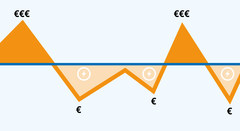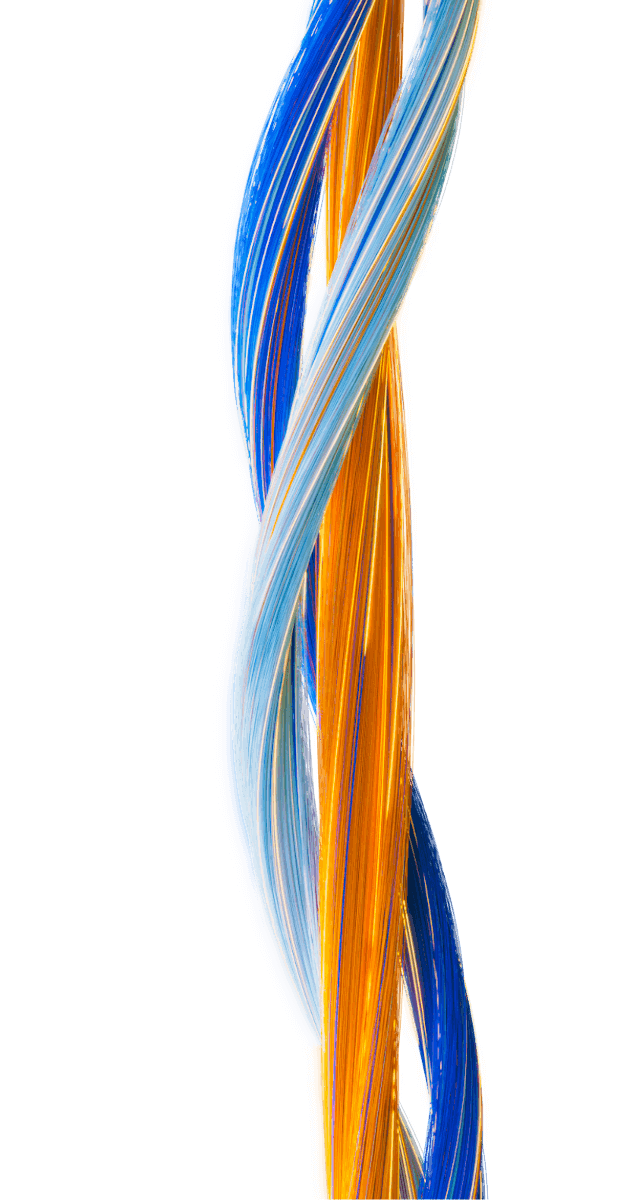What is Load Shifting and How Does it Work?
Last updated:
Charging your electric car from the comfort of your home sounds awesome. But there is something about it you need to know. An increase in EV home charging puts a massive strain on the power grid. The electric vehicle market isn't the only thing putting pressure on our energy system these days - severe weather conditions play a significant role as well. And as time goes on, it's only going to become more of a challenge.
Either way, the grid is under a lot of pressure right now. And the pressure grows. When there's too much demand, the system can reach a breaking point and result in power outages. In other words, lights in your house may start flickering or simply go off at some point.
Well, what can we do, you might wonder.
No worries, the solution is already found. It’s called load shifting. Have you heard about it? If you charge your vehicle at home or your company offers EV charging to its customers and employees, this term is a must-know for you.
What is Load Shifting?
The idea of load shifting is to adjust your energy consumption pattern. Instead of using energy during peak hours when everyone else is also trying to power up, you shift your consumption to off-peak hours when demand is lowest. In this case, "load" refers to the amount of electricity being used at a given time, and load shifting is all about postponing that load to prevent overloads and maintain a stable energy grid.
Wait for the best part. You don't have to sacrifice any of your electricity needs, you're just changing the timing. As simple as that.
By doing so, you can help balance the energy grid and prevent overloads during peak hours. Not only does load shifting help balance the power system, but it also makes it more resilient to unexpected events such as natural disasters, extreme weather conditions, and equipment failures.
Load Shifting vs Peak Shaving
Load shifting electricity is often confused with peak shaving. But they are as different as chalk and cheese. Load shifting when charging an electric vehicle means nudging charging to off-peak hours.
Peak shaving energy, on the other hand, is about reducing the power demand during peak hours to smooth out energy consumption.
Benefits of Charging with Load Shifting
So, load shifting. What’s in it for you?
Both, companies and private individuals, can save a pretty penny by using load shifting strategies. For example, companies can shift their energy-intensive operations such as manufacturing, production, and HVAC systems (Heating, Ventilation and Air Conditioning systems) to off-peak hours when the energy rates are lower. We know that doesn’t sound realistic, but we share some magic tricks later. Similarly, households can shift their energy consumption by running appliances such as washing machines, dishwashers, and dryers during off-peak hours.
But what are the benefits?
- Saving money: By shifting energy-intensive tasks to off-peak hours when energy rates are lower, both companies and individual consumers like you can save some serious cash on your energy bills.
- Keeping the lights on: Load shifting and load balancing can help reduce peak demand on the electrical grid, making it more stable and reliable. That means no blackouts and no flickering lights in the evening.
- Helping the environment: By using load shifting and load management strategies, we can reduce the need to generate energy from fossil fuels, which helps fight climate change and creates a more sustainable energy future.
How Does Load Shifting Work?
You want to shift your energy consumption without using any extra devices? For that, you would need to use your electricity-consuming appliances at night. And while you theoretically can start the washing machine at 2am (not the solution you would prefer, we know), large factories cannot do their operations while their workers are peacefully sleeping at home.
So other energy management strategies were found to reduce the stress on the power grid in a reasonable manner.
1. Load shifting with battery storage systems
With all the necessary equipment, companies can collect energy at night and store it in a battery. Obviously, using this energy during the day will not cause any trouble to the grid. Now, some might see this battery as an expense. But, in reality, it's more of an investment. The company will benefit financially by consuming cheaper electricity during off-peak hours.
But, what about for private consumers? Well, before you rush out to buy a similar system for your home, keep in mind that it's a costly initial investment that doesn't always pay off. In addition, the storage capacity is mostly low compared to the electric car battery. So, take a step back, weigh your options, and determine whether this would be a worthwhile investment.
2. Scheduling energy usage to off-peak hours
This is a strategy mostly used by private consumers.
Switching to night shifts to save energy may appear to be an effective way for businesses to shift their load, but it can result in higher costs that outweigh the energy savings. Furthermore, the convenience of the whole process is questionable, as it may cause logistical difficulties and staffing issues.
On the other hand, load shifting is a more viable option for individual consumers. Charging your electric vehicle at home in the hours of low electricity demand can have a positive impact on both the environment and your energy bill.
How can you actually do this?
Well, off-peak hours are generally at night. You usually pay less to charge your electric car at this time of day. So, in theory, you can go to the garage at around midnight, start charging your car and set your phone alarm for around 5 am - that's when you need to stop the charging. At this time, other people start waking up and turning on their kettles, boilers and computers - electricity demand starts rising.
You must be thinking, "There gotta be an easier way!" And you're totally right. A smart wallbox, like the go-e Charger, can make load shifting possible for you without the need to sacrifice your sweet dreams. The go-e Charger allows you to schedule charging to the night hours in the go-e app and go to bed at any time you want - charging will automatically start and finish at the specified time.
Advanced Load Shifting with the go-e Charger
We believe in the power of home charging, but we also care about the environment.
That’s why we’ve integrated flexible energy tariffs in our go-e Chargers. Your energy supplier is shown in the go-e app? This means the go-e Charger can track the electricity demand curve and charge your vehicle in the time periods when the demand is the lowest.
If you set a price limit per kWh in "Eco Mode", this means that the charger will start charging your electric vehicle as soon as the electricity price falls below the threshold you set.
In the "Planned Charge" setting, you can specify the number of kWh and the time when your electric vehicle should finish charging, without setting a price limit. The go-e Charger automatically selects the cheapest charging hours according to your electricity tariff until the specified number of kWh is reached at the set time.
Note: If your energy provider doesn't offer flexible tariffs just yet, don't worry. We're constantly updating our system, so get in touch with us and let us know who your provider is. We'll work on getting them on board so you can start reaping the benefits of off-peak charging.
How is that all related to load shifting?
The cheapest hours are, by default, the hours of the lowest demand. This means with the flexible electricity tariffs, you will avoid overstressing the power grid when charging your electric vehicle.
Saving money with the go-e Charger
As an electric car owner with the go-e Charger, you can take financial advantage of flexible energy tariffs easily. Energy prices can vary depending on when you're using it and who your electricity provider is. At times, the cost per kWh might change by as much as 10 to 20 cents between day and night. As they say, watch your pennies and the dollars will take care of themselves.
Summary
To make it short, here’s what you need to know about load shifting:
- Load shifting means adjusting your energy consumption so that it occurs during off-peak hours rather than peak hours.
- The goal of load shifting energy is to stabilise the power grid and make it more resilient.
- You can shift your electrical load by scheduling your electric vehicle charging.
- By shifting your energy consumption to off-peak hours, you can take advantage of lower rates and avoid costly peak-time charges.
- The go-e Charger can monitor your electricity demand and charge during the cheapest hours when demand is lowest.


